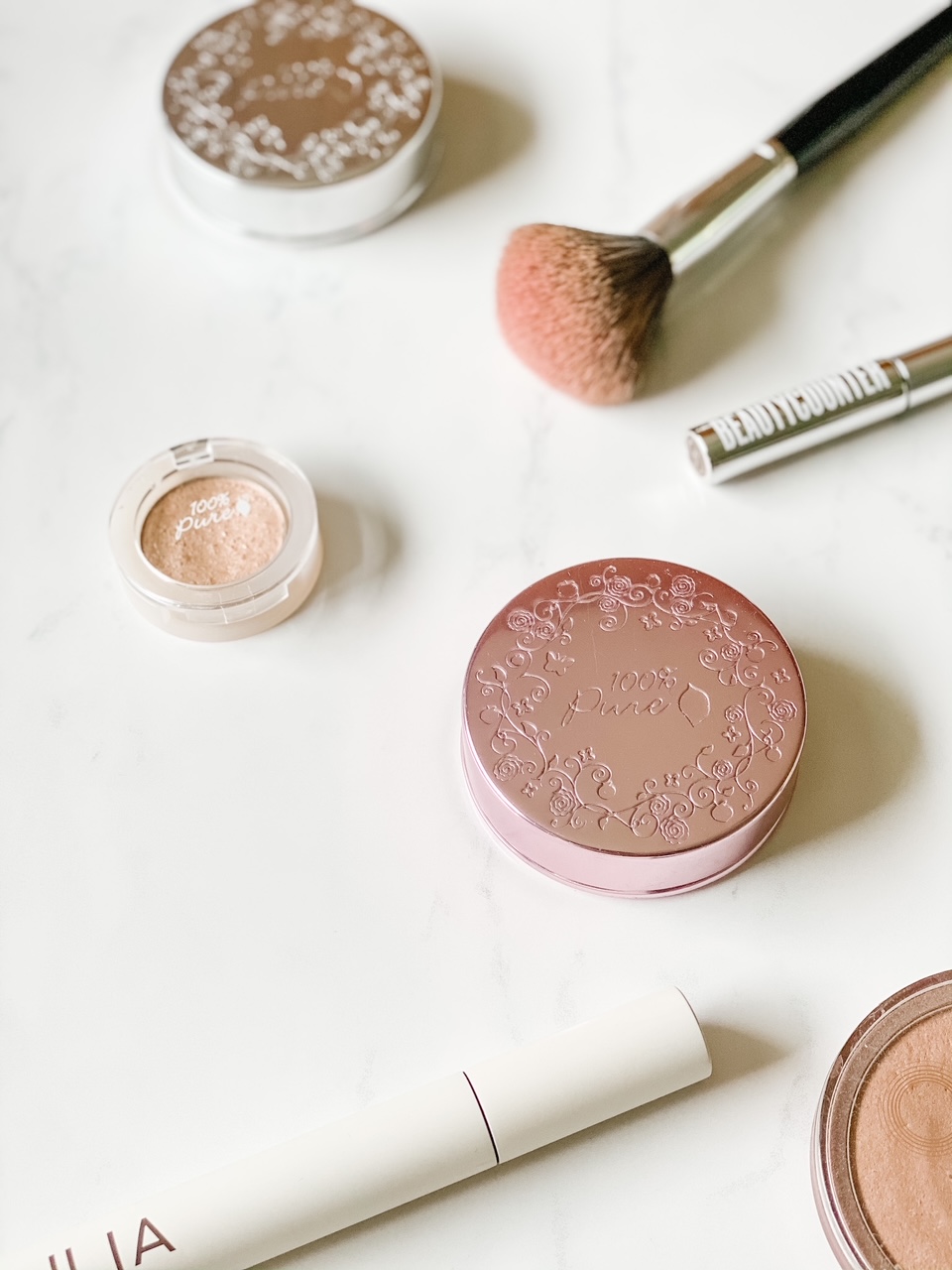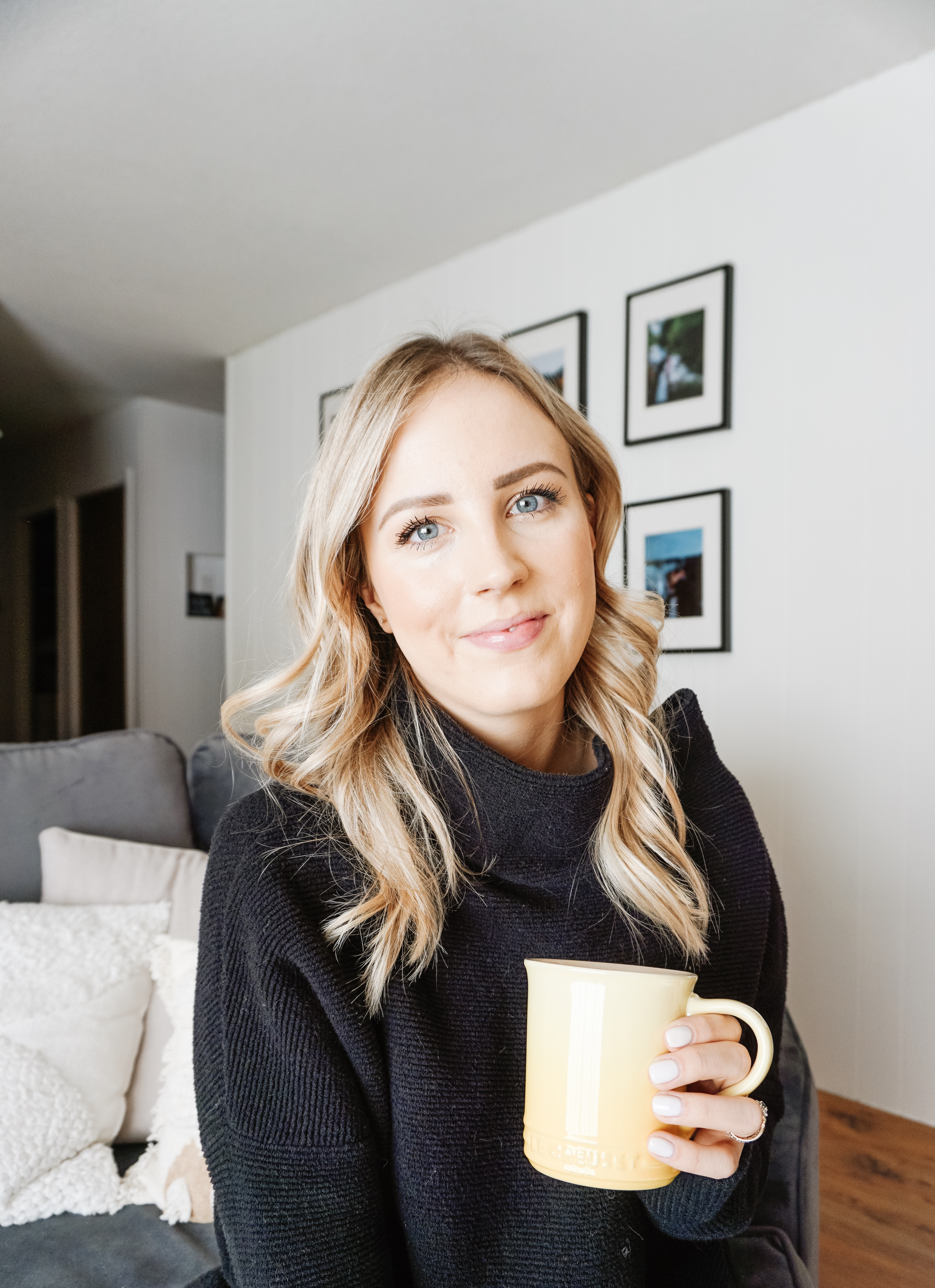Learn how to switch to clean beauty, and why the products we use on our skin is so important. Beauty products are often filled with endocrine disruptors, known carcinogens, and other harmful chemicals that can be disruptive to our health.
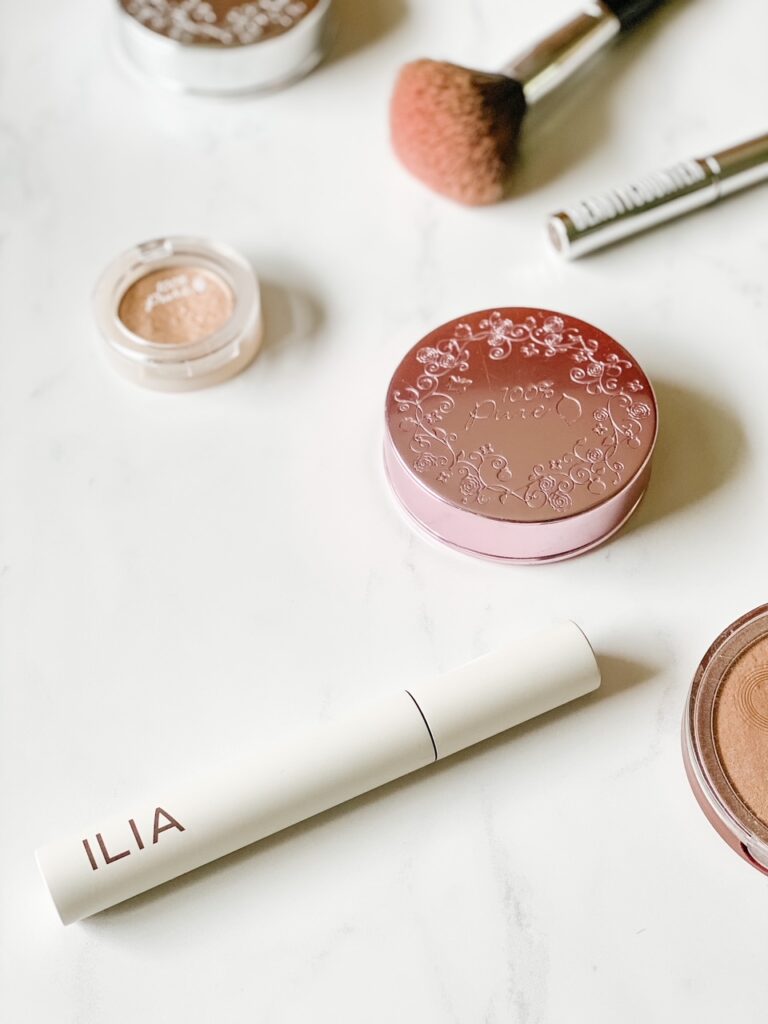
This post contains affiliate links, which means I make a small commission at no extra cost to you. See my full disclosure here.
Did you know that our skin is our largest organ? As women, every day we load ourselves up with cosmetics and personal care products. Think of your daily routine. It might include washing your hair, a full skincare routine, followed by makeup, deodorant, body lotion, and maybe even perfume. That adds up to a whole lot of potential toxins if we aren’t particular about the products we are using.
It takes just 26 seconds for the toxins found in the products we apply to our skin to absorb into the bloodstream. This is why it is so important that we are conscious about the products we use on our skin. I find it very concerning that these toxic products are available on our store shelves. We are living in an age where chronic illness and disease are so prevalent, and it’s important we begin to look at why.
I am sharing my best tips to get started on your journey with clean beauty. Keep reading below!
10 Ingredients To Avoid In Beauty Products
Chances are when you flip over a product to look at the ingredient list, you are going to be a little confused on what the ingredients are and what they mean. Typically, they have long and hard to pronounce names. Below are a list of ingredients that I choose to avoid at all costs when it comes to my clean beauty routine.
Fragrance. Fragrance is also listed as perfume or parfum. It is a blanket statement for what can be thousands of chemicals. Yes, thousands. Fragrance is considered a trade secret and therefore the ingredients do not need to be listed. The chemicals that are classified under fragrance are known to be disruptive to the endocrine system, respiratory function, and even reproductive system.
Parabens. Parabens are also known endocrine disruptors, and have been linked to an increased risk of breast cancer. They are able to act similarly to estrogen and cause disruption to the reproductive system and fertility. Parabens can interfere with hormone production. Parabens are one of the most common harmful ingredients you will see on the ingredient list of your personal care products.
Phthalates. Phthalates are actually used to make plastics softer and more flexible. They are linked to an increased risk of breast cancer. They might also cause birth defects. There are many forms of phthalates, but the following are the ones you are most likely to come across. Dibutyl phthalate is often found in nail polish. Diethyl phthalate is commonly found in moisturizers. Dimethyl phthalate is often in hair spray.
Sodium Laureth/Lauryl Sulfate. This is a surfectant, meaning it helps to create lather. It is a potential irritant of the skin, lungs, and eyes. Commonly found in shampoo, body wash, face cleansers, as well as… car washing soap.
Triclosan. Triclosan is an antimicrobial chemical. It is found in many products we use on a day to day basis, like soap, shampoo, conditioner, toothpaste, shaving products and more. It’s also found in the bodies of 75% of Americans. It can be harmful to our health and the environment while providing no benefit. Triclosan is actually a pesticide and can disturb the endocrine and reproductive systems. It also has been linked to increased sensitivity to allergens.
Polyethylene Glycols/PEGs. PEGs are used as a thickener in cosmetics. Often these are found in cream based products, sunscreens, and baby products. During the manufacturing process, there is potential for contamination with ethylene oxide or 1, 4-dioxane which are thought to be carcinogenic. Ethylene oxide is thought to interfere with development as well as the nervous system.
Formaldehyde. Yes, it is a common ingredient in personal care products. Formaldehyde is a known carcinogen. It is associated with respiratory issues and is a known sensitizer, and is thought to increase the risk of asthma. It is often found in nail polish, nail polish remover, and lash adhesives.
Triethanolamine. There is strong evidence that triethanolamine is an immune, respiratory, and skin allergen. There is concern of contamination with nitrosamines which are known carcinogens. Triethanolamine is found in products ranging from moisturizer to cosmetics to sunscreen.
Propylene Glycol/Butylene Glycol. Commonly found in skincare products, these are known to cause skin irritation. These ingredients are typically found in moisturizer, shampoo, conditioner, and hair spray.
Mineral Oil. Mineral oil is commonly used in skin care, hair care and baby products. It may be found in moisturizers, foundation, and more. Mineral oil is typically used as a filler in products because it is so inexpensive. Mineral oils also impact the respiratory system and cause skin irritation.
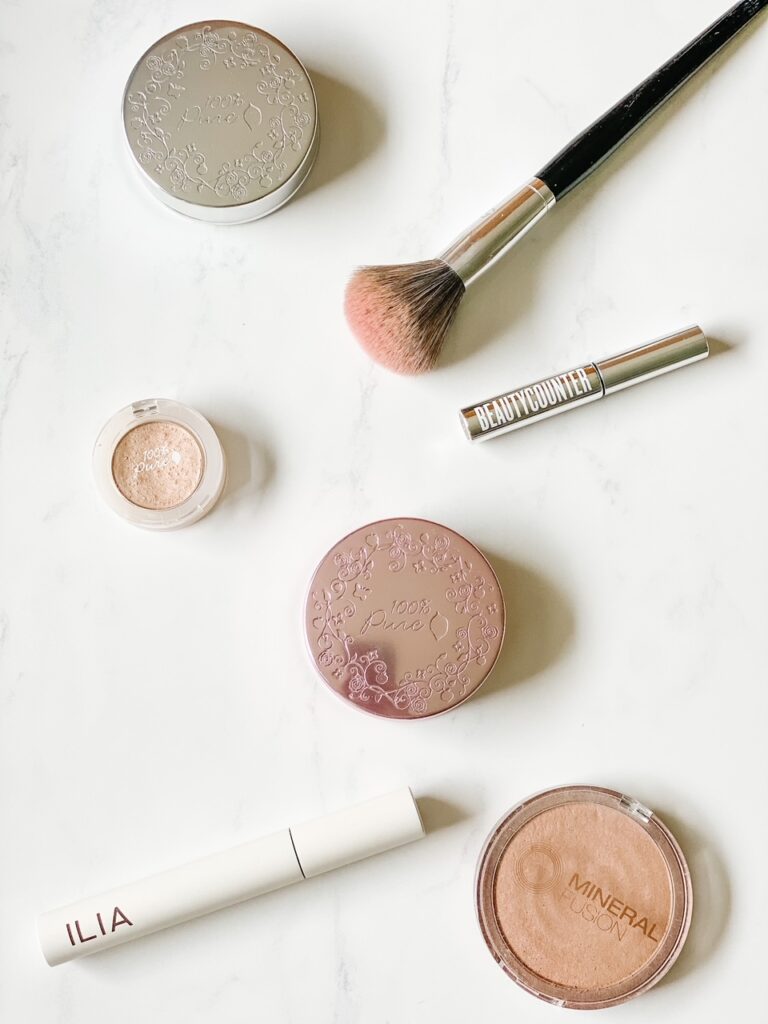
How To Switch To Clean Beauty Products
Everyone’s situation and concern level is going to be different. Some might feel convicted to ditch and switch everything at once. However, for most, your budget might not be able to take that hit. If it does, go for it!
My best recommendation is to start by switching out your products one by one, based on what runs out first or what you use the most often. If you wear eyeliner once a month, maybe that isn’t the best thing to switch first. Something you use on a daily basis like a face cleanser or moisturizer will have a bigger impact on your health.
Research Your New Clean Beauty Products Carefully
The clean beauty industry has come a long, long way since I switched to a clean beauty routine over 10 years ago. Back then, it was hard to find any clean products, and the ones that were available did not perform well.
One thing to be aware of when making the switch to clean beauty, is green washing. Green washing is when a company falsely makes a product look more environmentally friendly or natural than it actually is. It is hard to notice greenwashing because of the misleading marketing claims and package design. There is very little regulation on what can be placed on a label, and just because something says it is natural, doesn’t mean it actually is.
I highly recommend getting familiar with EWG Skin Deep or the Think Dirty App. These are both great resources to see how clean your products actually are.
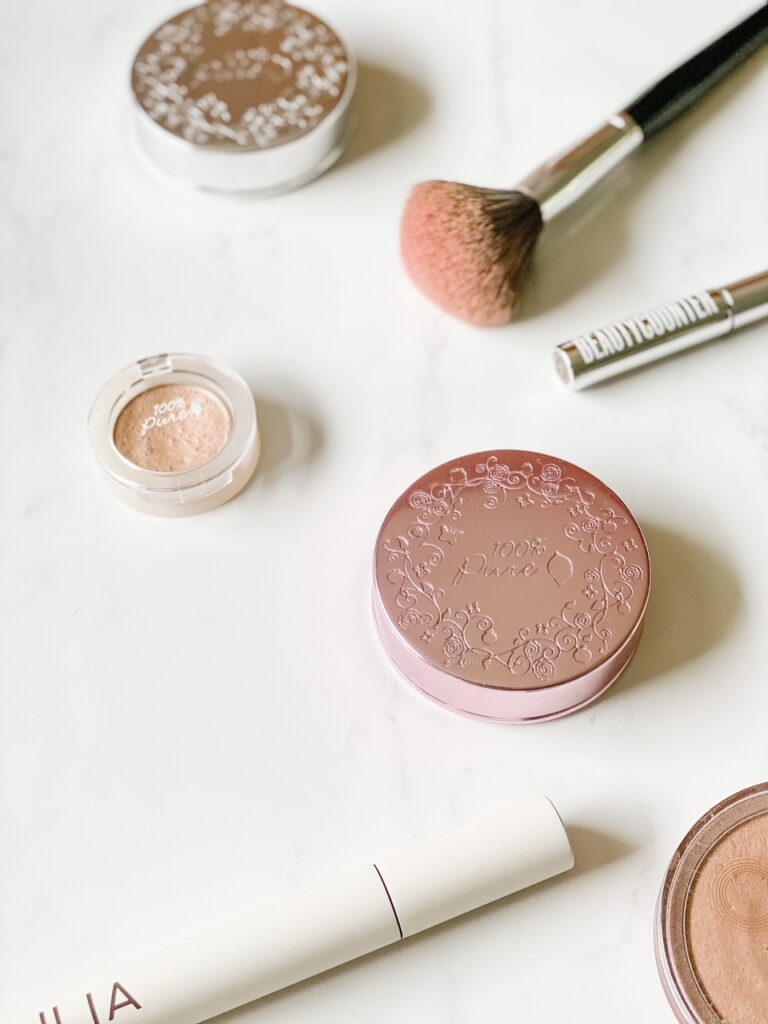
My Favorite Clean Beauty Brands
Over the years, I have tried plenty of clean beauty brands, and below are some companies that I believe to be some of the best clean beauty brands on the market. I chose to share below brands that are easy to find in a variety of stores for easy accessibility. I am sure you will love the below brans to add into your new clean beauty routine.
100% Pure. This brand formulates their products free from any and all artificial or synthetic products. Their ingredient labels are easy to dissect, and most importantly, their products perform well. Their products are cruelty free.
W3LL People. Another great clean beauty company! Free of fillers and made in the USA. Cruelty free. Their concealer is one of my very favorite clean beauty finds.
Ilia Beauty. Not only are Ilia’s products clean, but they perform so well. Their mascara is by far my favorite clean beauty option, and I have repurchased it over and over again. I also love their lipsticks. The founder of Ilia is from the city I grew up in which I love.
Pacifica Beauty. Pacifica’s products are formulated without parabens, mineral oils, sulfates, or phthalates. Cruelty free and vegan as well. In the summer Pacifica’s BB Cream is my go-to!
Mineral Fusion. This company has a wide range of products that are easy to track down. I love both their powder foundation and liquid foundation.
I hope this post helps you in your journey as you begin the switch to clean beauty products! The products we use have such an impact in our overall health. While it can be intimidating at first, there are plenty of resources available to make the transition much easier. Thankfully, the clean beauty industry has come a very long way in the past several years!
Pin It For Later
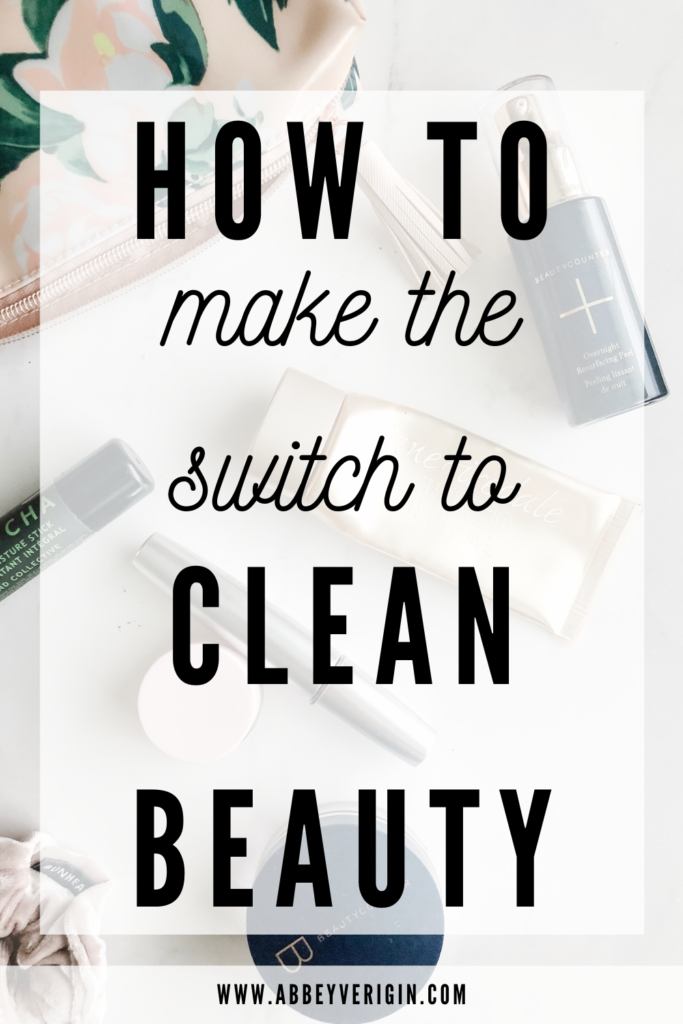
Other Posts You Will Love
How To Make Natural Body Butter
